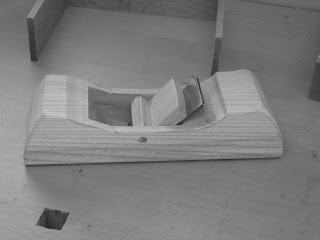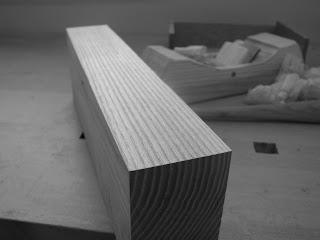To me, tool making is at the heart of craft. Craft is communication; communication between yourself and your medium, whether that medium is wood, clay, fiber, computer code, paint, sound, or stone. And the tools you use, how you use them, and your relationship with them will guide you in your communion with the medium.
The most basic tools you have, the basic building blocks of craft, are your senses and your hands. With these tools, you are able to craft more tools, more specialized tools, more instruments to play. In the end you may build yourself an orchestra of tools or maybe you are interested in just having a few fine instruments. Either way, the closer you can get to your instruments, the more intimate and fulfilling your work.
I have built some planes in the past, and I found it very satisfying. In this series of posts I hope to document and share my building of a new set of handplanes from scratch.
My father cut down a large red oak tree about a year ago.
He left me a few logs from near the base of the tree that I quartered.
Now I am splitting these quarters into blanks for the planes I plan to build.
The tools needed to split wood are basic. Wedge and Hammer.
Splitting wood is faster than cutting with a saw and yields stronger wood
(albiet not as true)
Laying out the plane blanks.
Simple 3" squares should accommodate the types of planes I plan on building.
Simply start the wedges on the line and work the wedges in tandem.
Oak is very easy to split if the wood is clear.
Here are all the blanks I split from the log pictures above.
It only took an hour or so.
Here is one of the riven blanks in the shop.
But, I shouldn't get too far ahead of myself. This wood is still too green to work, it will need to sit on the porch for a few months, I'll give it the summer off. Everyone should have a few months off in summer.









































